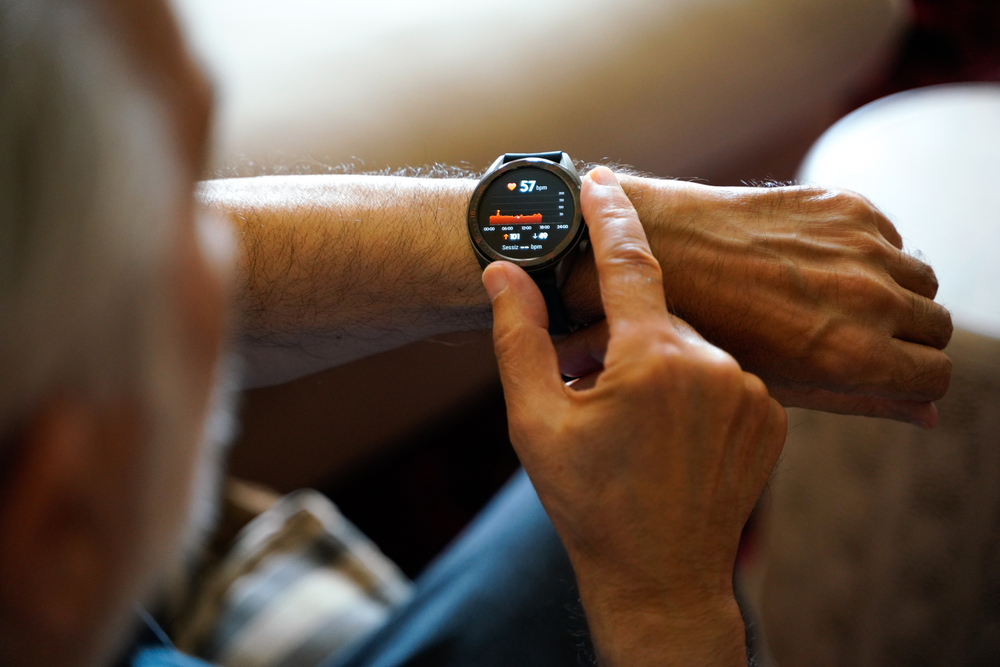The watch on your wrist might be doing far more than just tracking your steps these days. A new generation of wearable devices is transforming how we manage chronic conditions by continuously monitoring vital signs that once required a trip to the doctor’s office. This real-time health surveillance is quietly revolutionizing chronic disease management, potentially saving lives while giving patients unprecedented insight into their own bodies.
From smartwatches that detect irregular heartbeats to patches that track glucose levels without a single finger prick, these devices are blurring the line between consumer gadgets and medical equipment. The constant stream of data they generate is changing the relationship between patients and healthcare providers, creating opportunities for earlier interventions and more personalized treatment approaches.
Let’s explore how these unobtrusive health monitors are reshaping chronic disease management and why they might represent the future of healthcare for millions living with ongoing health conditions.
The continuous monitoring revolution
Traditional healthcare has long operated on a snapshot model—brief moments of data collection during occasional doctor visits that attempt to represent our overall health status. This approach leaves enormous gaps in understanding how chronic conditions behave in real-world settings and how they respond to treatments between appointments.
Continuous monitoring devices fundamentally change this paradigm by capturing thousands of data points daily, revealing patterns and triggers that would be impossible to detect during a standard 15-minute medical appointment. A patient with hypertension, for instance, might discover that their blood pressure consistently spikes during work meetings or drops too low after taking medication in the morning.
What makes this approach particularly powerful is how it captures the natural variability of human physiology. Our vital signs fluctuate throughout the day in response to countless factors—stress, food, medication, sleep quality, and activity levels. Continuous monitoring reveals these fluctuations, helping distinguish between momentary blips and concerning trends that require medical attention.
The psychological impact of this continuous awareness can be profound as well. Many patients report feeling more in control of their conditions when they can see real-time data, reducing the anxiety that often accompanies chronic illness. This sense of agency can lead to more engaged self-management and better adherence to treatment plans.
The cardiac surveillance breakthrough
Perhaps nowhere has continuous vital sign monitoring made a bigger impact than in cardiac care. Smartwatches and dedicated heart monitors now track heart rate and rhythm with remarkable accuracy, detecting subtle irregularities that might otherwise go unnoticed until they cause serious problems.
Atrial fibrillation—an irregular heartbeat that significantly increases stroke risk—perfectly illustrates the value of this technology. This condition often occurs intermittently and may produce no noticeable symptoms, making it difficult to catch during routine medical visits. Wearable ECG monitors can detect these episodes as they happen, potentially identifying high-risk patients before they experience a stroke or heart failure.
The latest devices don’t just collect data—they actively interpret it. Advanced algorithms can distinguish between harmless variations and potentially dangerous patterns, alerting users when something requires medical attention. This intelligent filtering prevents information overload while ensuring truly concerning changes don’t get overlooked.
Beyond rhythm monitoring, newer devices track metrics like heart rate variability—the subtle changes in time between heartbeats that can indicate stress levels and autonomic nervous system function. This more nuanced cardiac assessment helps patients understand how lifestyle factors affect their heart health and provides early warning signs of potential cardiovascular issues before they become emergencies.
The glucose monitoring transformation
For the millions living with diabetes, continuous glucose monitoring represents nothing short of a revolution in disease management. Unlike traditional finger-prick tests that provide isolated readings, these systems track glucose levels continuously throughout the day and night, revealing patterns that transform how diabetes is understood and managed.
The latest sensors, which adhere discreetly to the body and transmit data wirelessly to smartphones, have dramatically reduced the burden of diabetes management. Users receive real-time alerts when glucose levels rise or fall dangerously, preventing severe hypoglycemic episodes that can lead to unconsciousness or worse. Parents of children with diabetes report these devices dramatically reducing their nighttime anxiety, knowing they’ll be alerted if their child’s blood sugar drops during sleep.
What makes continuous glucose monitoring particularly valuable is how it reveals the impact of specific foods, activities, and medications on blood sugar levels. Users can see exactly how their body responds to a particular meal or exercise session, creating opportunities for highly personalized management strategies that simply weren’t possible with intermittent testing.
The psychological freedom these devices provide can’t be overstated. Many users report feeling liberated from the constant uncertainty of diabetes management, able to make data-driven decisions rather than educated guesses about their insulin needs and dietary choices. This confidence often translates to better glycemic control and reduced risk of long-term complications.
The respiratory monitoring advance
For those with chronic respiratory conditions like asthma or COPD, new wearable devices are providing unprecedented insight into breathing patterns and lung function. These monitors track metrics like respiratory rate, depth of breathing, and even subtle wheezing sounds that might precede a full-blown asthma attack or COPD exacerbation.
The preventive potential of this technology is enormous. Many respiratory crises develop gradually, with subtle changes occurring days before obvious symptoms appear. Continuous monitoring can detect these early warning signs—like gradually increasing nighttime wheezing or declining oxygen saturation—allowing for preemptive treatment adjustments that prevent emergency room visits or hospitalizations.
Environmental correlations represent another powerful advantage of continuous respiratory monitoring. By tracking breathing metrics alongside environmental data like pollen counts, air quality, or household allergen exposure, users can identify their personal triggers with remarkable precision. This knowledge allows for more targeted avoidance strategies and better-timed medication use.
The integration of respiratory monitoring with activity tracking creates particularly valuable insights for conditions like COPD. Patients can see exactly how different types and intensities of activity affect their breathing, helping them gradually increase exercise tolerance without triggering dangerous symptoms. This data-guided approach often leads to better functional capacity and quality of life despite progressive respiratory disease.
The blood pressure paradigm shift
Hypertension affects nearly half of American adults, yet traditional blood pressure monitoring provides woefully incomplete information about this complex condition. New wearable and home-based systems that track blood pressure continuously throughout the day are revealing just how dynamic this vital sign truly is.
These continuous monitors are exposing the limitations of conventional office-based readings. The phenomenon of “white coat hypertension”—elevated readings due to anxiety in medical settings—becomes immediately apparent when comparing clinic measurements to a person’s typical at-home values. Equally important is identifying “masked hypertension,” where blood pressure appears normal during doctor visits but rises dangerously at other times.
The circadian patterns revealed through continuous monitoring have particular clinical significance. Many people experience a natural blood pressure dip during sleep, and the absence of this “nocturnal dipping” correlates with increased cardiovascular risk. Continuous monitoring identifies these abnormal patterns, allowing for more precise timing of medications to restore healthy blood pressure rhythms.
For medication management, real-time blood pressure data proves invaluable. Patients and providers can see exactly when medications take effect, how long they last, and whether they’re controlling pressure throughout the entire day rather than just at the time of a clinic visit. This precision often leads to more rational drug selection, better timing of doses, and fewer medications needed for effective control.
The sleep quality connection
Chronic disease and sleep quality share a bidirectional relationship—poor sleep worsens many chronic conditions, and chronic conditions often disrupt sleep. New monitoring technologies track sleep metrics like duration, stages, breathing patterns, and movement, providing insights that help break this destructive cycle.
For conditions like heart failure, sleep monitoring can detect subtle changes that indicate worsening disease. Increasing sleep disruption, altered breathing patterns, or reduced time in deep sleep often precede more obvious symptoms like daytime shortness of breath or ankle swelling. Catching these changes early allows for medication adjustments that can prevent hospital admissions.
Sleep apnea detection represents another crucial application of this technology. This common but underdiagnosed condition significantly worsens outcomes in diabetes, heart disease, and hypertension. Wearable devices can now screen for probable sleep apnea by tracking breathing patterns, oxygen levels, and sleep disruptions, identifying patients who need formal testing and treatment.
The connection between sleep position and symptom severity becomes apparent through continuous monitoring as well. Many users discover that certain sleep positions worsen acid reflux, breathing problems, or joint pain. This knowledge allows for simple interventions like positional aids that can dramatically improve both sleep quality and chronic disease symptoms without additional medications.
The medication response tracking
Perhaps the most transformative aspect of continuous vital sign monitoring is how it reveals individual responses to medications with unprecedented clarity. Rather than waiting weeks to assess drug effects during follow-up appointments, patients and providers can see how treatments impact physiological parameters within hours or days.
This immediate feedback allows for more rapid optimization of drug regimens. Ineffective medications can be identified quickly and replaced, while effective ones can be adjusted to maximize benefits and minimize side effects. For conditions requiring multiple medications, this approach helps determine which drugs are providing genuine benefits and which might be unnecessarily complicating treatment.
Timing optimization represents another valuable application. Many medications produce different effects depending on when they’re taken. Continuous monitoring helps identify the optimal administration time for each individual based on their unique physiological patterns, potentially improving efficacy while reducing dosage requirements and side effects.
The objective data provided by monitoring devices also helps distinguish true medication side effects from unrelated symptoms. This clarity often improves medication adherence, as patients can see concrete evidence of a drug’s benefits weighed against any adverse effects they might experience.
The future of chronic disease management clearly involves continuous monitoring technologies that transform occasional clinical snapshots into comprehensive, real-time health narratives. As these devices become more sophisticated, affordable, and integrated with healthcare systems, they promise to fundamentally change how we understand and manage chronic conditions. The result may be not just better disease control but a more empowered patient experience and a healthcare system that can intervene before crises occur rather than simply responding to them.















